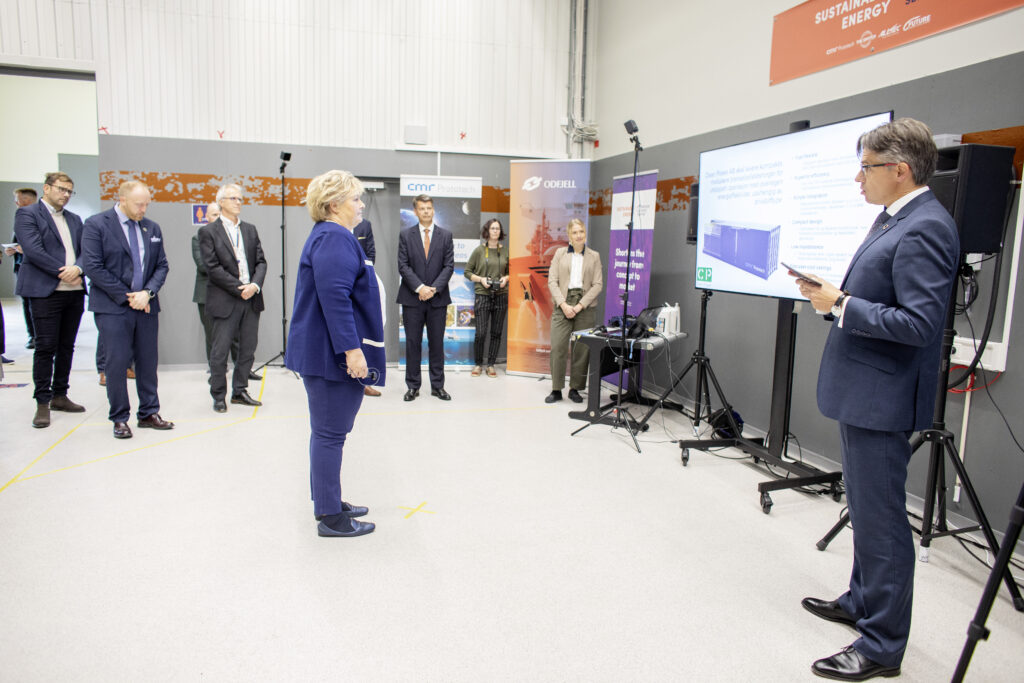
Prototech, a technology development company headquartered in Bergen, is responsible for the development and delivery of the 2MW fuel cell modules to be installed in offshore vessel Viking Energy in the end of 2023.
– By the end of the year we will be reaching the first milestones. This includes the requirements specifications and design basis for the MW scale fuel cell modules, covering simulations and modelling, material assessments and conceptual design of the modules to prepare for further detailed engineering in 2021, researcher in Prototech Tjalve Magnusson Svendsen says.
From space to ocean space
Prototech is a spin out company from research institute NORCE, former Christian Michelsen Research, fpunded in the 1930s. Prototech has more than 30 years of experience with fuel cells and hydrogen technologies for different applications.
– In ShipFC Prototech is responsible for the development and delivery of the fuel cell modules, and for the further upscaling towards the 20 MW replicator design cases. We are starting with lab tests, modelling activities, design activities etc. preparing for the construction of containerized modules adding up to a total of 2MW. The modules will then be tested at the Sustainable Energy Catapult Centre at Stord before they shall be installed and onboard Viking Energy. We are also producing a study of potential NOx formation and mitigation actions to prevent any harmful emissions from the system. This work is mainly performed by IMM Fraunhofer, Svendsen says.
Prototech is also working closely with the Maritime Safety Research Centre of Strathclyde, Greek National Centre for Scientific Research Demokritos, as well as the industrial partners, for safety design and approval process for the modules.
Great potential
Ammonia has the potential to serve as a viable zero-emission solution covering demanding ship types and operational routes, such as deep-sea shipping.
– The potential is largest for ship types requiring large fuel tanks compared to engine/fuel cell capacity, and where the energy system has a relatively low weight compared to the rest of the vessel. This is also the segments where the potential for emission reductions is the greatest, and ammonia can be mean to drastically reduce emissions from such vessels, Svendsen says.
One of the main advantages of ammonia is that it can be a zero-emission fuel. It also has some other advantages compared to other potential zero-carbon solutions.
– I would say the most important factor is that the value chain of ammonia handling is well established, with ammonia already available near ports around the globe. Although it will take time to convert all production to “green” and/or “blue” ammonia and to develop fueling infrastructure for vessels, this is expected to be significantly easier for ammonia than for the alternatives. Other advantages are relatively easy storage conditions, and that the energy density is quite, Svendsen says.
SOFC technology
The fuel cell modules that are being developed for the Viking Energy, use hydrogen from the ammonia together with oxygen from the air to produce an electrical current through an electrochemical reaction, forming water and leaving only nitrogen and useable heat in the exhaust. Since the fuel is not burned, but rather electrochemically converted, this can be performed at a high efficiency. When using high temperature fuel cell heat that is produced in the process can be utilized for ammonia cracking, which is important to obtain high efficiency.
– The fuel cell system is based on so-called Solid Oxide Fuel Cell technology, operating on around 800 degrees Celsius. The technology is currently being developed and validated in lab-scale and in down-scaled versions in a Norwegian funded (Innovation Norway) project. In ShipFC we will scale up the system based on lessons learned from testing, to a 2 MW system consisting of 3 containerized modules. The modules will include multiple fuel cell stacks, and all necessary Balance of Plant components and interfaces, in addition to ventilation and safety systems, Svendsen says.
Challenging work
Developing the world´s first ammonia driven fuel cells also brings up challenges and safety related concerns.
– The main safety related property to be accounted for in the design, is the toxicity (and strong odor) even in small concentrations. Ammonia is also corrosive and has a relatively high weight per unit energy. Other challenges are mainly related to lack of operational experience, including use of novel technology on board and limited access to fueling facilities, Svendsen says.
The ShipFC project has received funding from the Fuel Cells and Hydrogen 2 Joint Undertaking under grant agreement No 875156. This Joint Undertaking receives support from the European Union’s Horizon 2020 research and innovation programme, Hydrogen Europe and Hydrogen Europe research.
